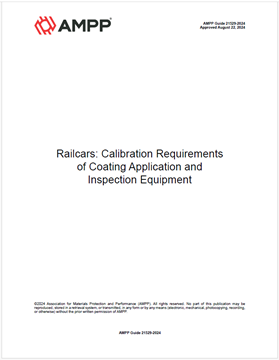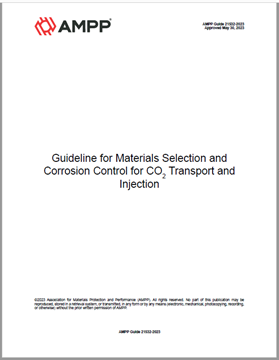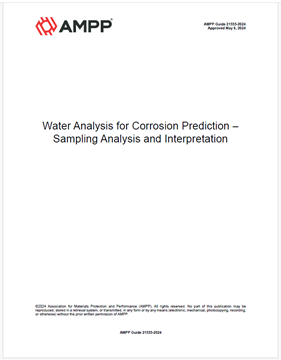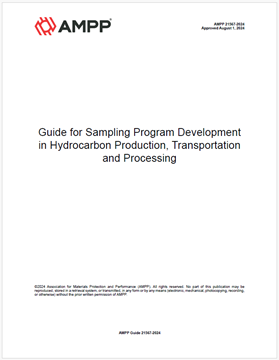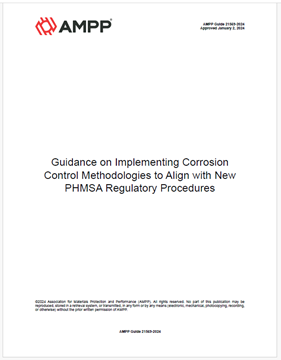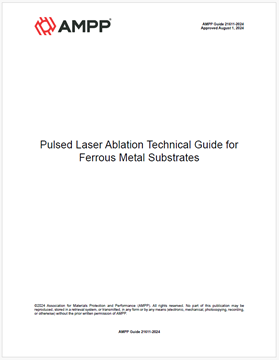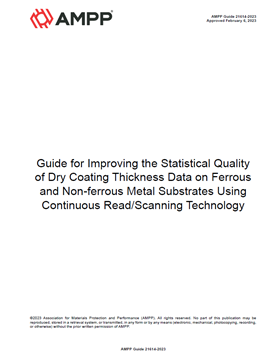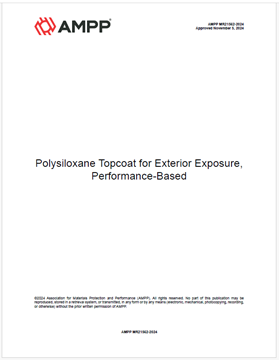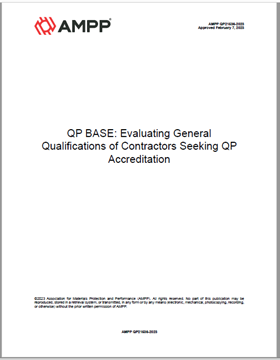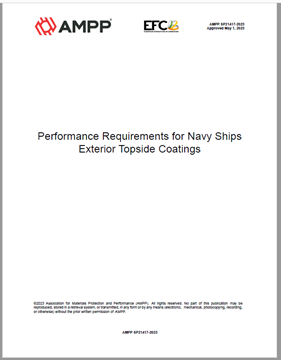Search
AMPP Standards
View as
Sort by
Display
per page
AMPP Guide 21529-2024, Railcars: Calibration Requirements of Coating Application and Inspection Equipment
Product Number:
AMPP Guide 21529-2024
Publication Date:
2024
$109.00
AMPP Guide 21532-2023, Guideline for Materials Selection and Corrosion Control for CO2 Transport and Injection
Product Number:
AMPP Guide 21532-2023
Publication Date:
2023
$109.00
AMPP Guide 21555-2024, Water Analysis for Corrosion Prediction - Sampling Analysis and Interpretation
Product Number:
AMPP Guide 21555-2024
Publication Date:
2024
$109.00
AMPP Guide 21567-2024, Guide for Sampling Program Development in Hydrocarbon Production, Transportation and Processing
Product Number:
AMPP Guide 21567-2024
Publication Date:
2024
$109.00
AMPP Guide 21569-2024, Guidance on Implementing Corrosion Control Methodologies to Align with New PHMSA Regulatory Procedures
Product Number:
AMPP Guide 21569-2024
Publication Date:
2024
$109.00
AMPP Guide 21611-2024, Pulsed Laser Ablation Technical Guide for Ferrous Metal Substrates
Product Number:
AMPP Guide 21611-2024
Publication Date:
2024
$109.00
AMPP Guide 21614-2023, Guide for Improving the Statistical Quality of Dry Coating Thickness Data on Ferrous and Non-ferrous Metal Substrates Using Continuous Read/Scanning Technology
Product Number:
AMPP Guide 21614-2023
Publication Date:
2023
$109.00
AMPP MR21562-2024, Polysiloxane Topcoat for Exterior Exposure, Performance-Based
Product Number:
AMPP MR21562-2024
$109.00
AMPP QP21536-2023, QP BASE: Evaluating General Qualifications of Contractors Seeking QP Accreditation
Product Number:
AMPP QP21536-2023
Publication Date:
2023
$109.00
AMPP SP03-30-2022, Treatments for the Protection for Metal Parts of Service Stores and Equipment Against Corrosion
Product Number:
AMPP SP03-30-2022
Publication Date:
2022
$109.00
AMPP SP21417-2023, Performance Requirements for Navy Ships Exterior Topside Coatings
Product Number:
AMPP SP21417-2023
Publication Date:
2023
$109.00
AMPP SP21438-2023, Cathodic Protection of Metallic Structures Submerged in Fresh Water
Product Number:
AMPP SP21438-2023
Publication Date:
2023
$109.00

